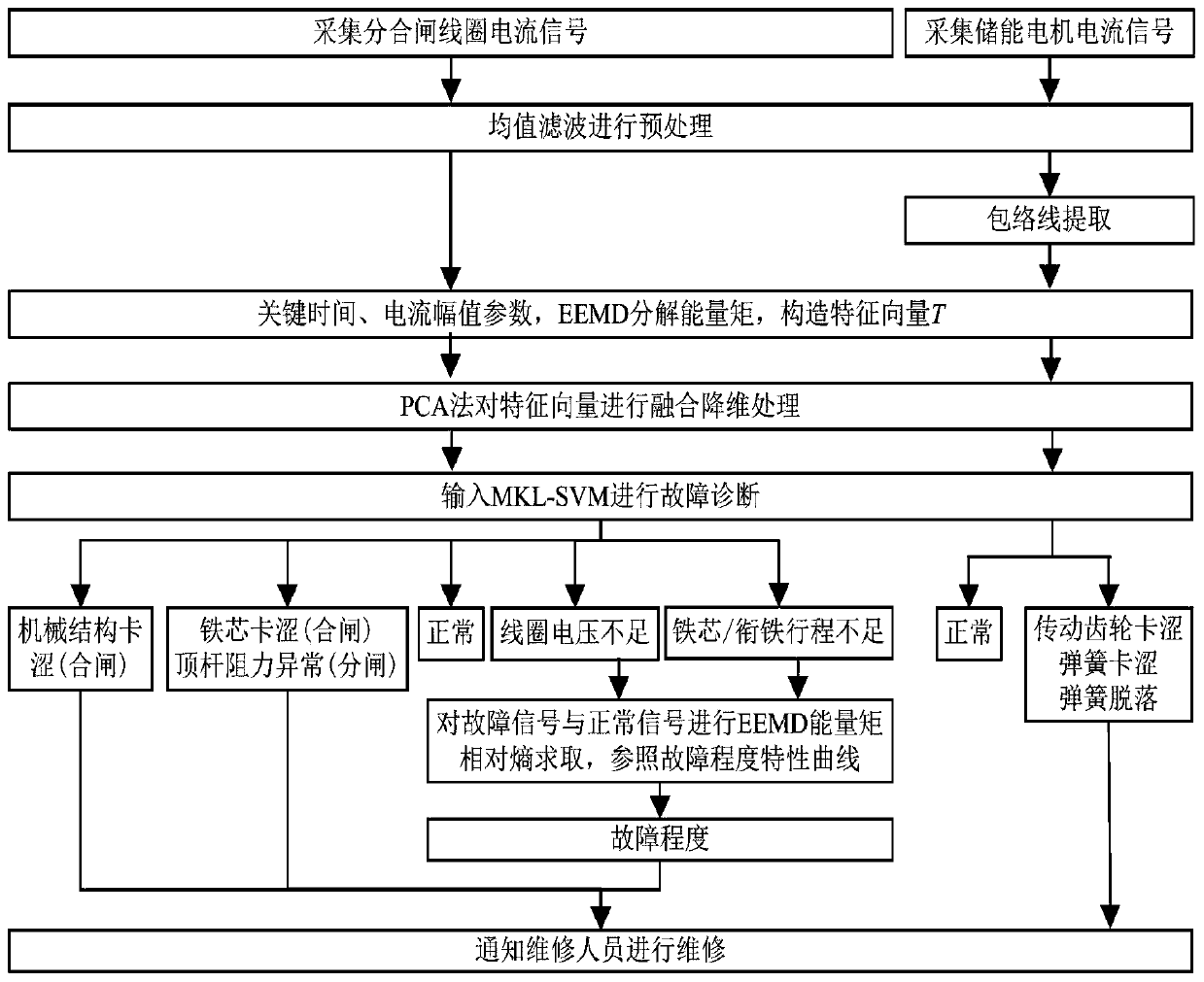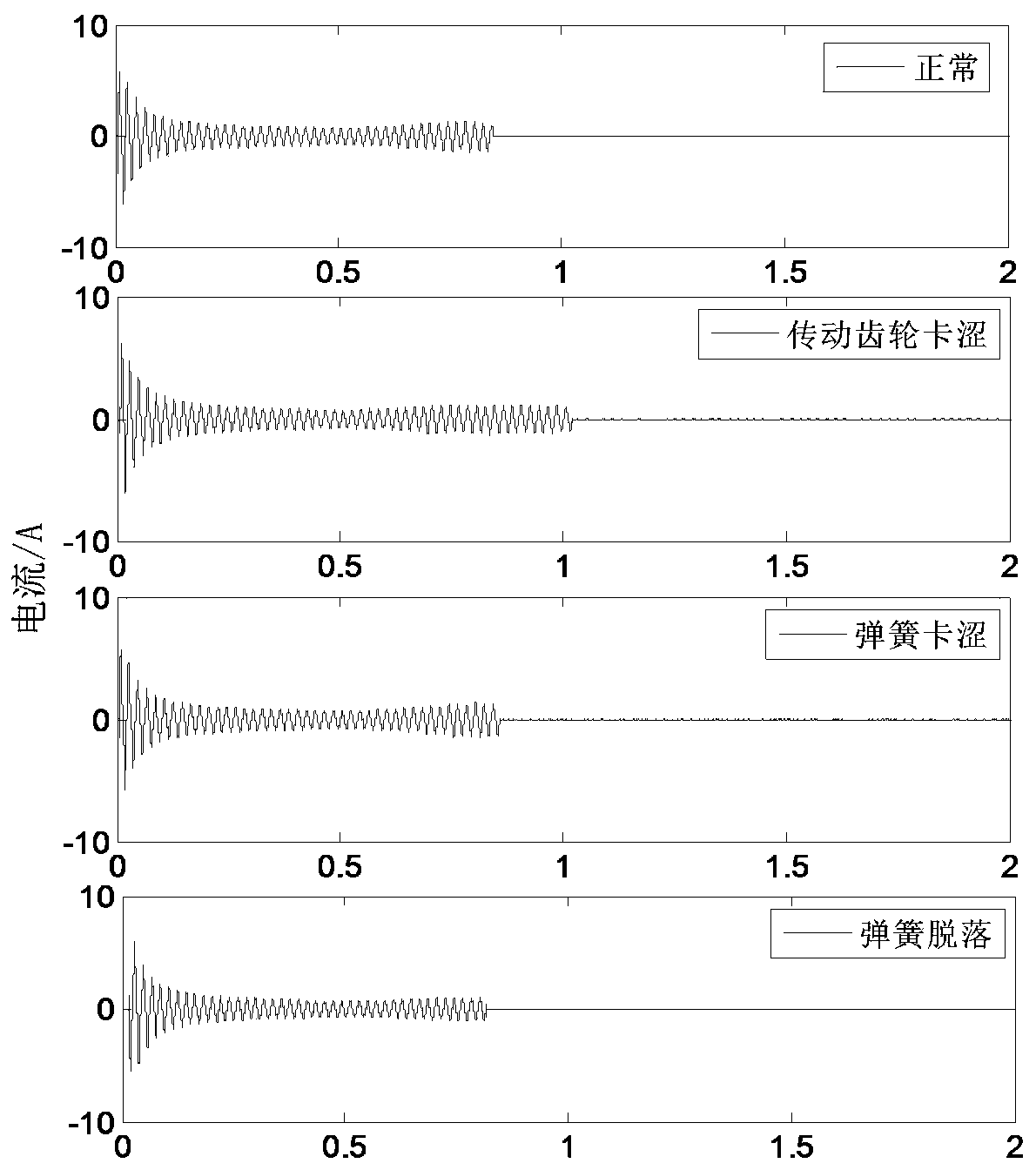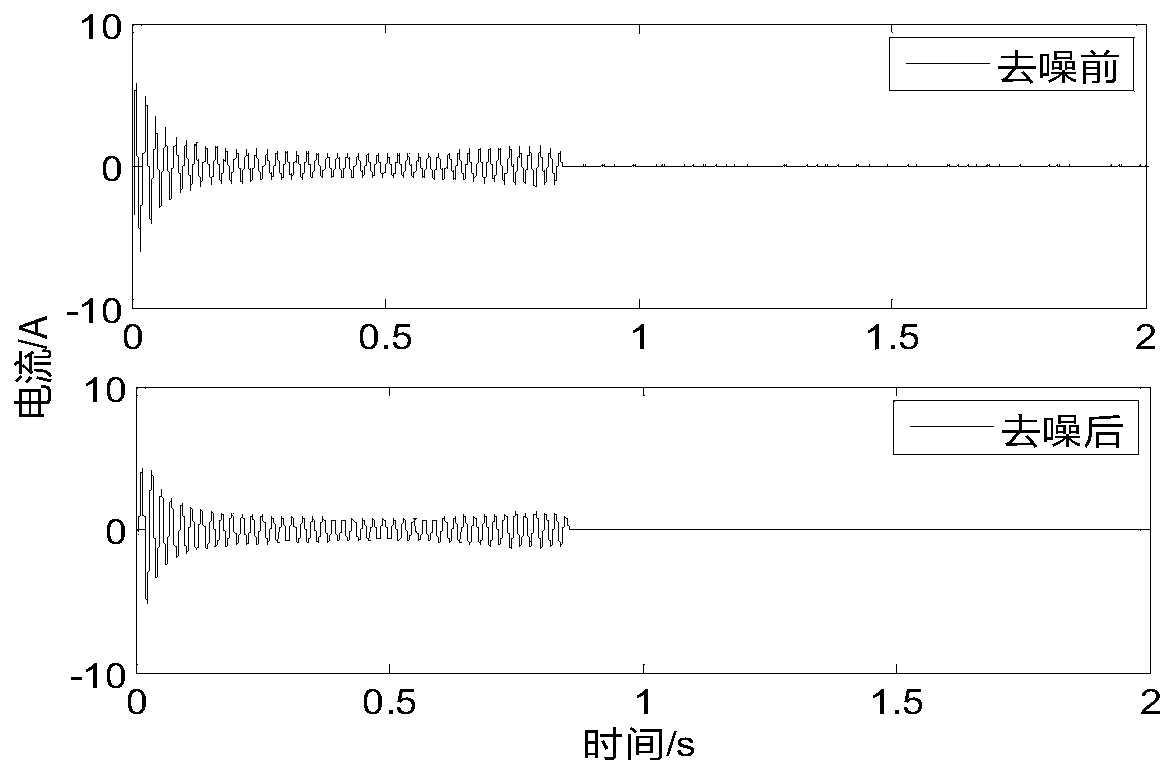Fault diagnosis and degree evaluation method of frame circuit breaker based on operating accessory current
A fault diagnosis and circuit breaker technology, which is applied in circuit breaker testing, instrumentation, and electrical measurement, can solve problems such as economic losses caused by power outages, misjudgment of fault levels, and affecting the working status of circuit breakers.
- Summary
- Abstract
- Description
- Claims
- Application Information
AI Technical Summary
Problems solved by technology
Method used
Image
Examples
Embodiment 1
[0212] In this example, a frame-type circuit breaker of model DW15-1600 is used as the test object. The mechanical structure of this circuit breaker is highly visible, and it is suitable for distribution networks with a rated operating voltage of 380V and 50Hz. The rated current is 1600A, and the switch mechanism is a spring. operating mechanism. The energy storage motor is a reluctance synchronous motor with a rated voltage of AC380V, a starting torque of not less than 8N·m, and a speed of 750r / min. The fault simulation method in the energy storage stage is: use a hard iron wire to fix a certain length of energy storage spring to simulate the spring jamming caused by the corrosion of the energy storage spring of the circuit breaker, and place a wooden wedge between the transmission gears to simulate the transmission gear jam of the circuit breaker. For astringent faults, since the probability of spring falling off is relatively small and extreme, only one spring falling off i...
Embodiment 2
[0238] In this example, a frame-type circuit breaker of model DW15-1600 is used as the test object. The mechanical structure of this circuit breaker is highly visible, and it is suitable for distribution networks with a rated operating voltage of 380V and 50Hz. The rated current is 1600A, and the switch mechanism is a spring. operating mechanism. The closing electromagnet in the closing coil circuit is an armored solenoid electromagnet, the voltage is 380V, 50Hz, the number of turns is 2130 turns, and the enamelled copper wire has a diameter of 0.25mm. The fault simulation method in the closing coil circuit is as follows: a thin iron wire is inserted between the moving iron core shaft of the solenoid electromagnet and the coil to simulate the jamming fault of the iron core; Insert a small wooden rod to simulate the jamming fault of the mechanical structure; the simulation of the fault degree of insufficient iron core stroke is realized by adding different numbers of rubber pad...
Embodiment 3
[0266] In this example, a frame-type circuit breaker of model DW15-1600 is used as the test object. The mechanical structure of this circuit breaker is highly visible, and it is suitable for distribution networks with a rated operating voltage of 380V and 50Hz. The rated current is 1600A, and the switch mechanism is a spring. operating mechanism. The opening electromagnet in the opening coil circuit is a snap-on electromagnet, the voltage is 380V, 50Hz, the number of turns is 4650 turns, and the enamelled copper wire has a diameter of 0.21mm. The fault simulation method of the opening coil circuit is: use an elastic rope to tie the push rod push piece, and simulate the abnormal resistance of the push rod during the stroke; since the opening electromagnet is a snap-on electromagnet, its armature stroke is smaller than that of the closing electromagnet , in order to construct a sufficient number of faults of different degrees, so by pasting different numbers of hard paper (0.1mm...
PUM
 Login to View More
Login to View More Abstract
Description
Claims
Application Information
 Login to View More
Login to View More - R&D
- Intellectual Property
- Life Sciences
- Materials
- Tech Scout
- Unparalleled Data Quality
- Higher Quality Content
- 60% Fewer Hallucinations
Browse by: Latest US Patents, China's latest patents, Technical Efficacy Thesaurus, Application Domain, Technology Topic, Popular Technical Reports.
© 2025 PatSnap. All rights reserved.Legal|Privacy policy|Modern Slavery Act Transparency Statement|Sitemap|About US| Contact US: help@patsnap.com



